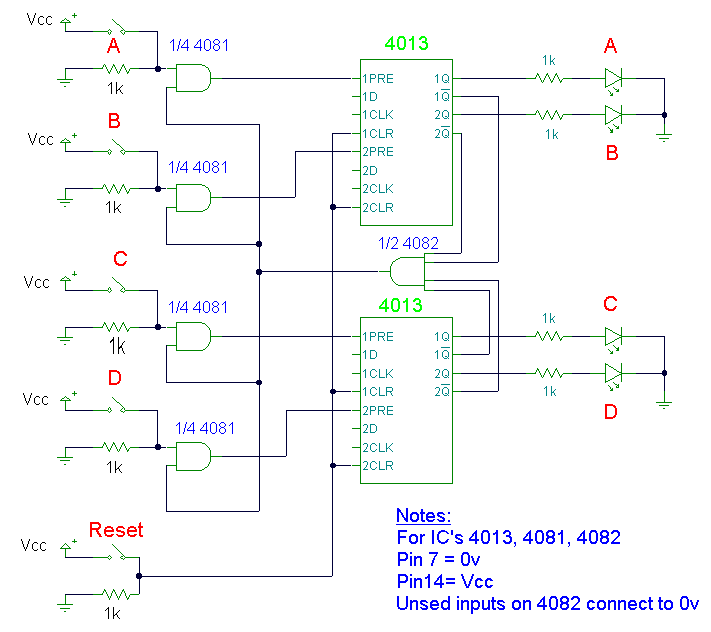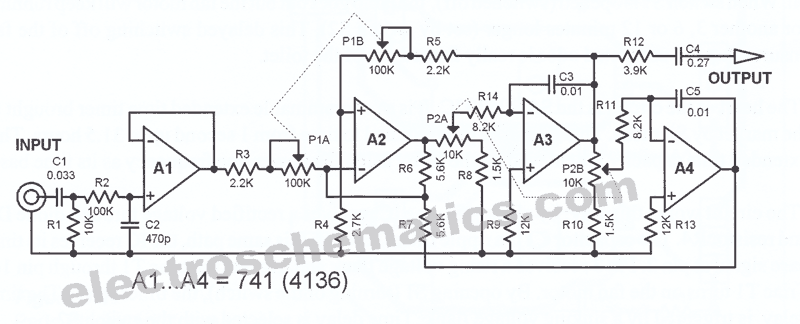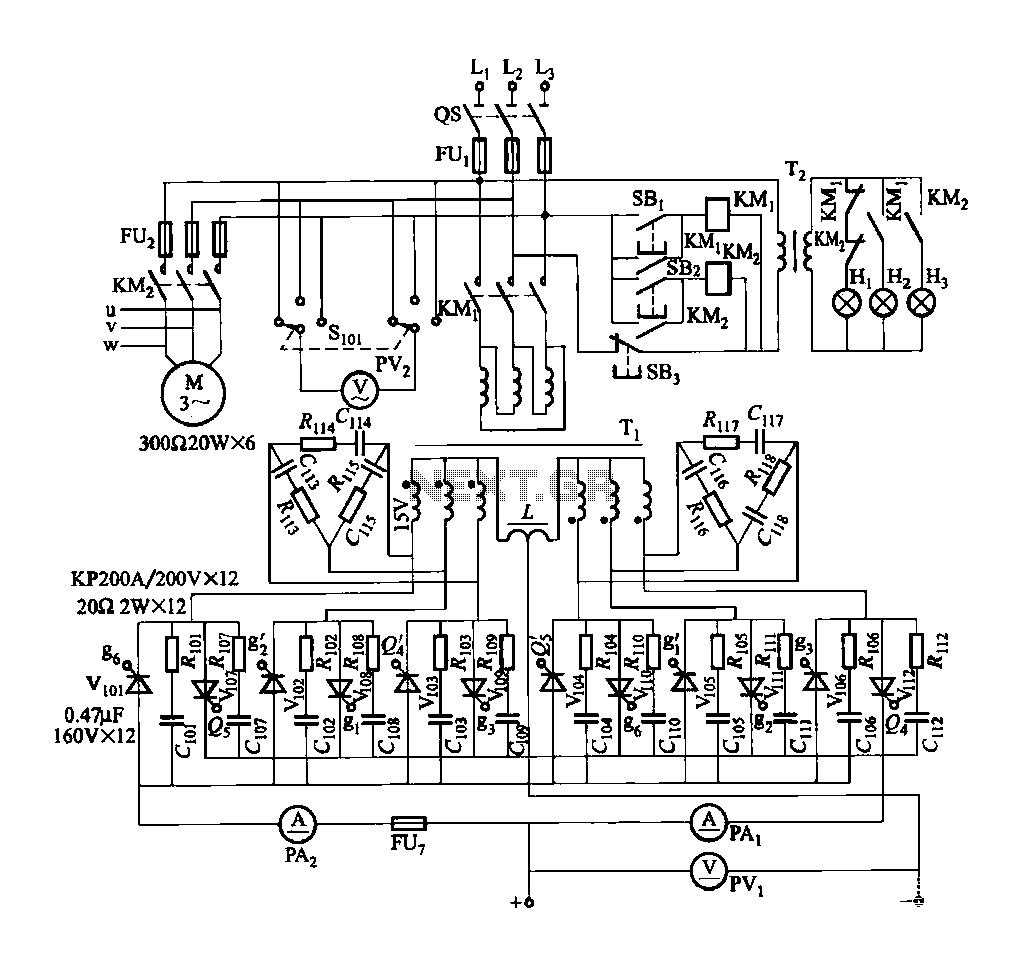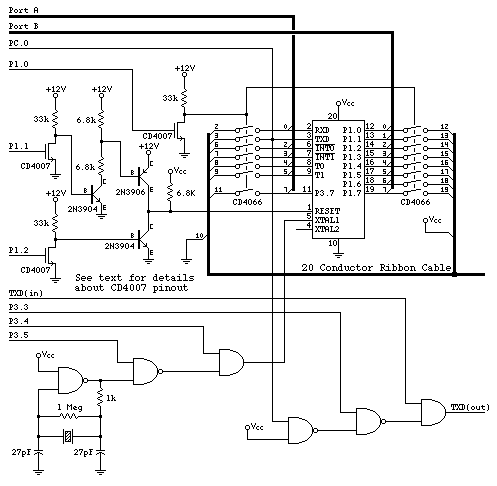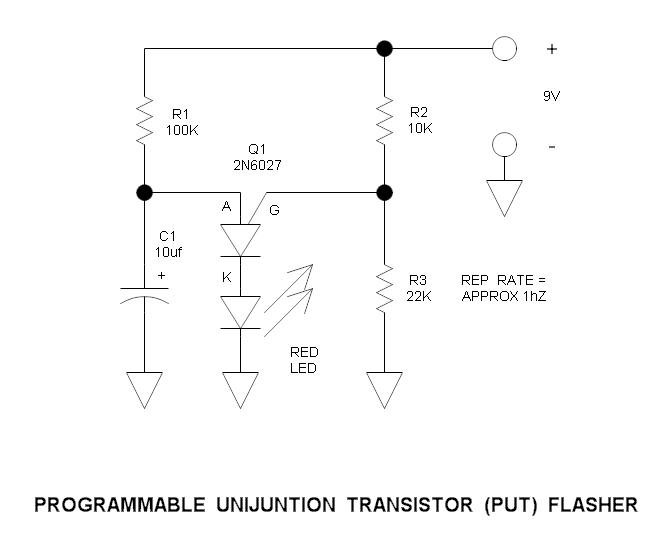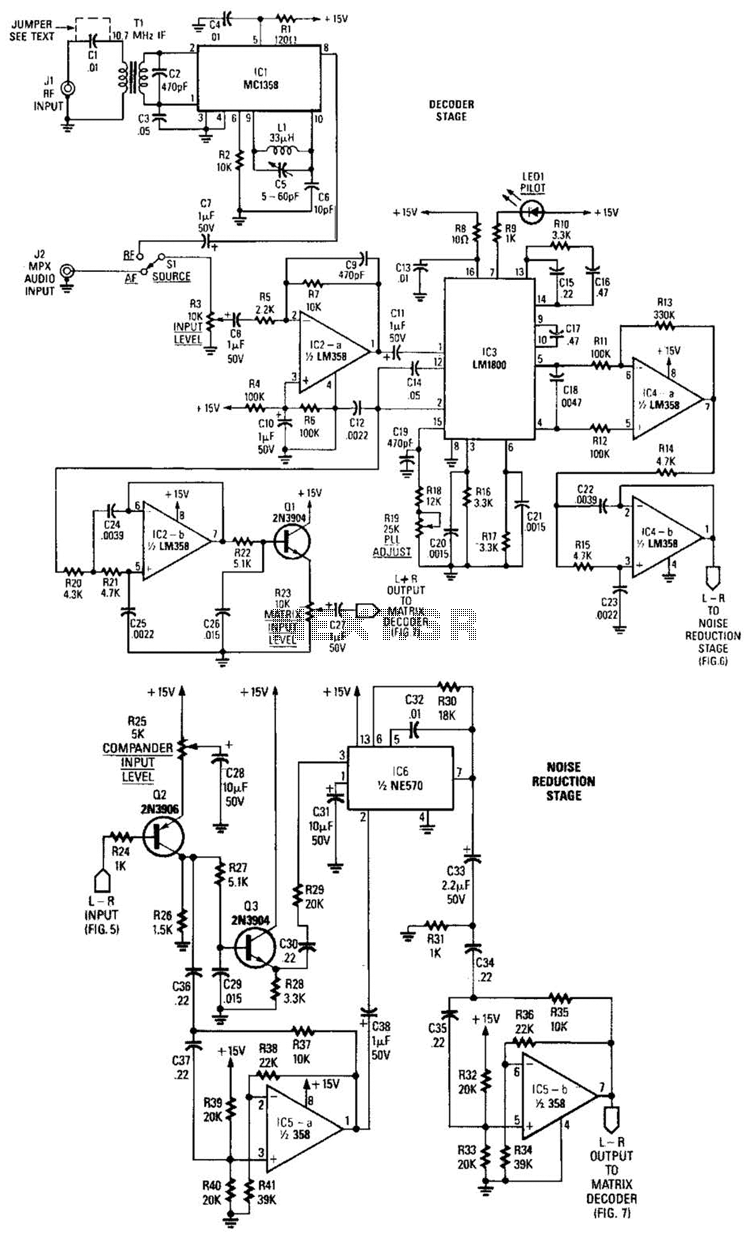
Digital circuit touch delay circuit 5
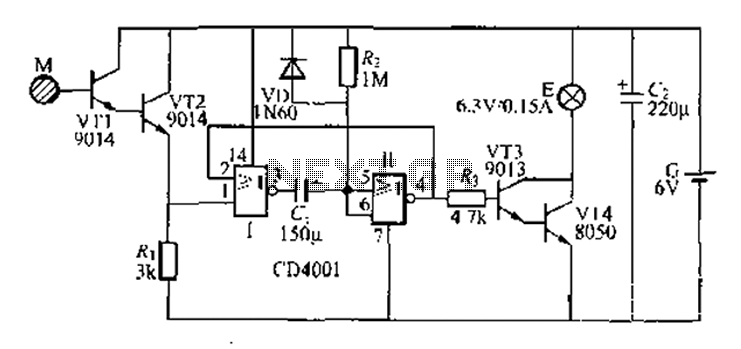
A two-battery powered light touch delay circuit designed for convenience at night. It can be placed on a bed pillow, and when the metal contact M under the capsule is touched, a small lamp will automatically light up. The circuit incorporates a NOR gate and peripheral components to create a single-shot timing function. Under normal conditions, the output terminal of the NOR gate remains low, keeping transistors VT3 and VT4 off, which prevents the small lamp from illuminating. When touch is detected, the human body acts as a sensor, sending a clutter signal that is amplified by transistors VT1 and VT2. This amplified signal causes the NOR gate's first output pin to go high, changing the output to a low power level. Consequently, the circuit enters a temporary steady state, allowing VT3 and VT4 to conduct and power the small lamp. The power is managed by a resistor and capacitor, which charge the input terminals of the NOR gate. After approximately two minutes, the voltage rises, causing the NOR gate to return to a low state, turning off the small lamp. The NOR gate can be implemented using a quad 2-input NOR gate such as the CD4001 digital integrated circuit. To avoid potential interference, the unused input terminals of the NOR gate should be connected to the negative terminal of the power supply.
The described circuit is a practical solution for providing temporary lighting in low-light conditions, such as during the night. The use of a touch-sensitive mechanism allows for easy activation without the need for physical switches, enhancing user convenience. The integration of the NOR gate facilitates a simple yet effective timing function, ensuring that the light remains illuminated only for a limited duration, which conserves battery life.
The circuit's design employs two transistors (VT1 and VT2) to amplify the signal generated by the human touch. This amplification is crucial for ensuring that even a minimal touch can trigger the circuit, making it highly sensitive and responsive. The choice of a NOR gate for the logic component is advantageous due to its versatility and availability in standard digital ICs, such as the CD4001. This IC can accommodate multiple NOR gates, allowing for additional functionality or redundancy in the design.
In terms of component selection, the resistor and capacitor values should be chosen based on the desired delay time and the characteristics of the light bulb used. The resistor limits the current flowing through the circuit, while the capacitor determines the timing interval before the circuit resets to its initial state. Careful consideration of these components will ensure reliable operation and longevity of the circuit.
Overall, this light touch delay circuit exemplifies a thoughtful approach to solving common nighttime lighting challenges, combining simplicity, efficiency, and ease of use in its design.A two battery-powered light touch delay circuit, it can be placed on the bed pillow, nighttime convenience, to touch metal M under the capsule on a small lamp will automaticall y light F Zmin around. Indiscriminately, the NOR gate I, or non-f J and peripheral components single -shot timing circuits, or usually J output terminal pin is low level, the three shake tube VT3, VT4 off, small l E does not shine. Night Q. Just touch when needed temporary lighting F electrode sheet M, the human body sensors of clutter signal by VT1, VT2 amplification, the signal is a half weeks so that is input NOR gate L first O pin goes high, pin output low power level, the NOR gate foot jump goes high, the circuit into the temporary steady state, and VT3, VT4 conduction, small lamp E will be powered light.
At this power by R, to C, charging the two input terminals NOR gate of, song lu foot stretch rising after about about 2min, paid back to the steady state of the NOR gate circuit feet of recovery low, small light F off. Or rli, NOR gate may be a quad 2 input NOR gate CD4001 digital integrated circuits, so that the manifold in use when the other two unused input NOR gate terminal, namely, a foot all connected with the negative terminal of the power supply G may not be vacant, in order to eliminate the potential interference ten.
The described circuit is a practical solution for providing temporary lighting in low-light conditions, such as during the night. The use of a touch-sensitive mechanism allows for easy activation without the need for physical switches, enhancing user convenience. The integration of the NOR gate facilitates a simple yet effective timing function, ensuring that the light remains illuminated only for a limited duration, which conserves battery life.
The circuit's design employs two transistors (VT1 and VT2) to amplify the signal generated by the human touch. This amplification is crucial for ensuring that even a minimal touch can trigger the circuit, making it highly sensitive and responsive. The choice of a NOR gate for the logic component is advantageous due to its versatility and availability in standard digital ICs, such as the CD4001. This IC can accommodate multiple NOR gates, allowing for additional functionality or redundancy in the design.
In terms of component selection, the resistor and capacitor values should be chosen based on the desired delay time and the characteristics of the light bulb used. The resistor limits the current flowing through the circuit, while the capacitor determines the timing interval before the circuit resets to its initial state. Careful consideration of these components will ensure reliable operation and longevity of the circuit.
Overall, this light touch delay circuit exemplifies a thoughtful approach to solving common nighttime lighting challenges, combining simplicity, efficiency, and ease of use in its design.A two battery-powered light touch delay circuit, it can be placed on the bed pillow, nighttime convenience, to touch metal M under the capsule on a small lamp will automaticall y light F Zmin around. Indiscriminately, the NOR gate I, or non-f J and peripheral components single -shot timing circuits, or usually J output terminal pin is low level, the three shake tube VT3, VT4 off, small l E does not shine. Night Q. Just touch when needed temporary lighting F electrode sheet M, the human body sensors of clutter signal by VT1, VT2 amplification, the signal is a half weeks so that is input NOR gate L first O pin goes high, pin output low power level, the NOR gate foot jump goes high, the circuit into the temporary steady state, and VT3, VT4 conduction, small lamp E will be powered light.
At this power by R, to C, charging the two input terminals NOR gate of, song lu foot stretch rising after about about 2min, paid back to the steady state of the NOR gate circuit feet of recovery low, small light F off. Or rli, NOR gate may be a quad 2 input NOR gate CD4001 digital integrated circuits, so that the manifold in use when the other two unused input NOR gate terminal, namely, a foot all connected with the negative terminal of the power supply G may not be vacant, in order to eliminate the potential interference ten.
Warning: include(partials/cookie-banner.php): Failed to open stream: Permission denied in /var/www/html/nextgr/view-circuit.php on line 713
Warning: include(): Failed opening 'partials/cookie-banner.php' for inclusion (include_path='.:/usr/share/php') in /var/www/html/nextgr/view-circuit.php on line 713
